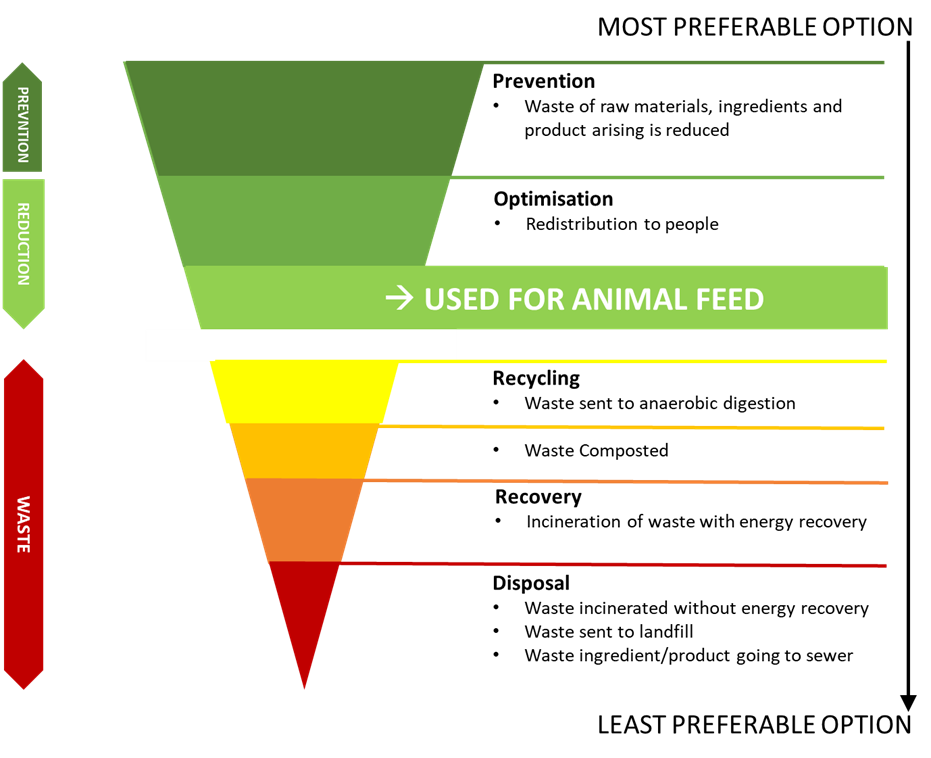This article was authored by Dr Brett Glencross and published in The International Aquafeed Magazine, in March 2023
I came across an interesting statistic the other day, that the average UK citizen wastes more than 105kg of food each year. The notion that the average person in that country wastes more than their own weight in food each year to me seems horrific. But it seems that the Brit’s are not “special” in this regard, with most western/developed nations producing similar estimates of food waste from their national food systems. So, in a time when all costs seem to be rising, including that of food, never has there been a more urgent need to do something about “waste not, want not…”.
So, what to do? One modern mantra we often hear for dealing with waste (of any sort) is the “reduce-reuse-recycle” tagline. Notably, given the state of obesity in modern society, it is clear that many of us could start by adopting the first option and it would probably help solve two problems. But what about the reuse and recycle parts? How do we distinguish between what we mean by reuse versus recycle in the feed/food context. In an earlier column I wrote about how the process of reusing by-products from human food production was now becoming a core part of the modern marine ingredients sector. With about one third of all global marine ingredient production now coming from by-products. So, in this context what we mean is the reuse of those food grade products not desired for direct human consumption, so we turn them into indirect consumption, by feeding them to our future food.
In contrast to recycle a food product essentially means to convert the organic food biomass into energy or compost, through processes like biomass energy generation or composting. In these situations we end up liberating the nutrients and energy within those waste products, but at least we capture some benefit. In effect we recycle the nutrients and energy. The alternative options are a worst outcome still of course, where we either just burn it and not capture any energy or bury it in landfill. Unfortunately, and perhaps surprisingly, a lot of that still happens with many food products. From all these different use options, what we can note is that there is a clear resource use hierarchy on what we should do with food resources we don’t eat (Figure 1). Importantly, we can see that converting unused food resources to animal feed is one of the higher priorities.
While in the marine ingredients sector we are already well aware of constraints to expanding the availability of wild-capture marine ingredients, we are seeing an overall growth in our resource base. However it is less so from direct forage fisheries and more from the recycling of seafood biomass. Increasingly we are seeing seafood production chains valorise the by-products, as while this represents 50% or more of much of our fish processing, its small extra value is seen as the “cream on top” in terms of value creation from a product that until not that long ago was either burnt or buried. With this new resurgence in food recycling, the marine ingredient sector is now shining as great case study in being part of building a waste-free world. As we said earlier, “waste not – want not”.

Figure 1 Food resource use hierarchy, showing the generalised preferential use of food resources not directly eaten by humans. Notable, is that the first priority is the prevention of waste occurring by using only what we need. However, following that a reduction of waste by retaining those valuable nutrients within our food systems is prioritised by redistribution of those resources, or through indirect contribution to the food chain by being used as animal feeds. Beyond that, every other option is a loss of nutrients to our global food system.








